#flat iron steak recipe
Explore tagged Tumblr posts
Photo

Perfect Flat Iron Steak This recipe for flat iron steak uses a marinade of garlic and herbs to enhance the flavor of the tender, perfectly cooked beef. 1/2 teaspoon chopped fresh chives, 3/4 teaspoon ground black pepper, 1/4 teaspoon dry mustard powder, 1/4 teaspoon chopped fresh rosemary, 1 teaspoon chopped fresh parsley, 2 cloves garlic minced, 2.5 tablespoons olive oil, 1/2 teaspoon salt, 1/4 cup Cabernet Sauvignon, 1 flat iron steak
1 note
·
View note
Photo

Asian Flat Iron Steak Recipe An Asian-inspired dish is flat iron steak marinated in a soy sauce-based marinade with green onions and garlic. Mix of Asian vegetables is served! 1/4 cup rice wine vinegar, 1/4 cup brown sugar, 1 tablespoon minced garlic, 1/4 cup sliced green onions, 1 tablespoon mustard powder, 2 tablespoons sesame seeds, 1/2 cup reduced-sodium soy sauce, 2 pounds flat iron steak
0 notes
Photo

Perfect Flat Iron Steak This flat iron steak recipe includes a garlic-herb marinade to bring out the best flavor in this perfectly cooked, tender cut of beef.
0 notes
Photo

Beef - Marinated Flat Iron Steak A flat iron steak that has been marinated and grilled is delicious, juicy, and tender.
0 notes
Photo
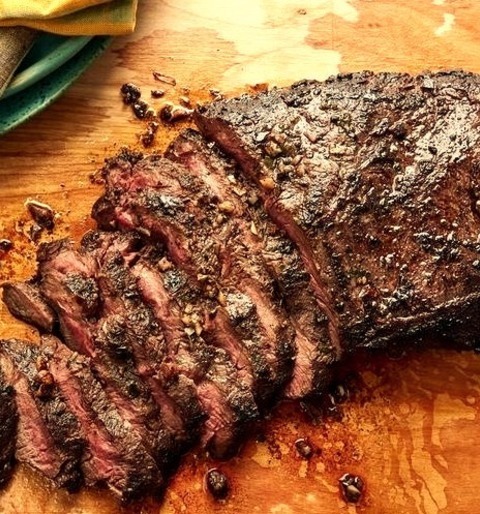
Perfect Flat Iron Steak This flat iron steak recipe includes a garlic-herb marinade to bring out the best flavor in this perfectly cooked, tender cut of beef.
40 notes
·
View notes
Photo

Steak Alfredo This uniquely rich twist on the classic fettuccine Alfredo includes marinated and grilled steak, fresh herbs, and spinach.
0 notes
Photo

Recipe for Foolproof Flat Iron Steaks This recipe for flat iron steaks calls for a mixture of balsamic vinegar, garlic, and thyme. It is basically foolproof.
0 notes
Photo

Flat Iron Steak with Mushroom Sauce - Steaks Your family and friends will love this recipe for tender slices of flat iron steak served with a creamy wine and mushroom sauce. It would be wonderful served over roasted potatoes or a rice pilaf.
0 notes
Photo

Flat Iron, Grilled This recipe makes a spice rub for flat iron steaks which are then grilled and baked to your desired tenderness. 4 flat iron steaks, 1 teaspoon garlic powder, 1 teaspoon dark brown sugar, 2 teaspoons fresh lime juice, 1 tablespoon ground black pepper, 1 teaspoon onion powder, 2 tablespoons olive oil, 2 teaspoons kosher salt, 1 teaspoon cayenne pepper
0 notes
Photo

Foolproof Flat Iron Steaks Recipe This recipe for flat iron steaks calls for a mixture of balsamic vinegar, garlic, and thyme. It is basically foolproof. 2 flat iron steaks, 1/4 cup balsamic vinegar, 1 tablespoon soy sauce, 1/2 teaspoon dry mustard, 3 tablespoons extra virgin olive oil, 4 cloves garlic minced, 3 tablespoons finely chopped green onions, 1/4 teaspoon ground black pepper, 1 teaspoon chopped fresh thyme
0 notes
Text
Steak Alfredo Recipe

This uniquely rich twist on the classic fettuccine Alfredo includes marinated and grilled steak, fresh herbs, and spinach.
0 notes
Photo
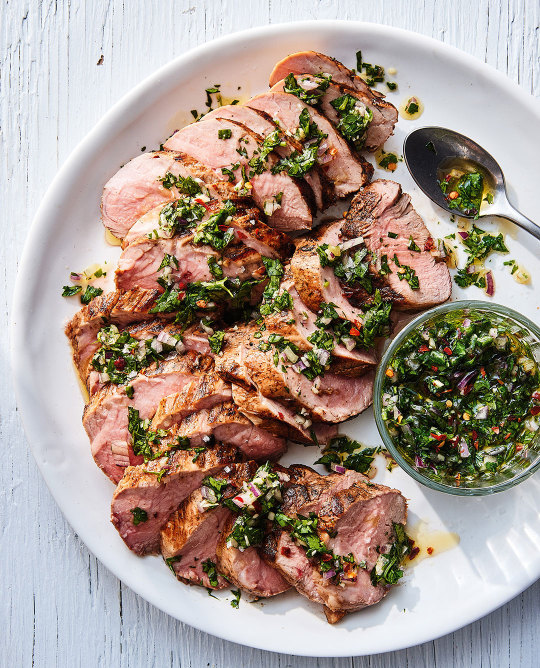
RECIPE: Grilled Pork Tenderloin with Chimichurri (from Meal Prep Magic by Catherine McCord)
It was in Argentina where I began my love affair with chimichurri; a pot of it accompanied whatever meat we were eating. Just the thought of pairing it with pork tenderloin makes me giddy.
PREP TIME: 15 minutes, plus 1 to 2 hours for marinating COOK TIME: 15 minutes SERVES: 4 to 6
¼ cup (60 ml) Dijon mustard
½ cup (120 ml) apple cider vinegar
3 tablespoons light or dark brown sugar
8 cloves garlic, minced
⅓ cup (75 ml) plus 2 tablespoons olive oil
1½ teaspoons kosher salt
2 to 2½ pounds (910 g to 1.2 kg) pork tenderloin, fat and silver skin removed
½ cup (15 g) packed fresh cilantro
½ cup (15 g) packed flat- or curly-leaf parsley
1 small shallot, peeled
2 tablespoons red or white wine vinegar
2 tablespoons fresh lime juice
Pinch crushed red pepper
Freshly ground black pepper
Place the Dijon mustard, apple cider vinegar, brown sugar, half of the garlic, 2 tablespoons of the olive oil, and 1 teaspoon salt in a large zip-top bag. Squish the bag to mix the marinade. Add the pork tenderloin and use your hand on the outside of the bag to move the marinade around the pork. Marinate for 1 to hours at room temperature or overnight in the refrigerator.
To make the chimichurri, in a food processor, place the cilantro, parsley, remaining garlic, shallot, the remaining ⅓ cup (75 ml) olive oil, the red or white wine vinegar, lime juice, crushed red pepper, remaining ½ teaspoon salt, and black pepper and pulse until finely chopped.
Heat a grill to medium heat. Grill the marinated pork on several sides for a total of 14 to 15 minutes, or until the internal temperature is 135 to 140°F (55 to 60°C) when checked with an instant-read thermometer inserted in the thickest part of the meat. (Alternatively, you can use a cast-iron skillet to roast the pork. Heat over medium-high heat and add 1 tablespoon of olive oil. Sear the pork all over for a total of 6 minutes. Transfer the pan to a 400°F (205°C) oven and roast for 15 to 20 minutes.)
Allow the pork to rest for at least 10 minutes to allow the juices to settle before slicing. Use a sharp knife to cut pork on a bias into ½-inch (12 mm) slices and top with the chimichurri sauce.
Make sure not to overcook the pork. Pork should never be cooked to more than 135 to 140°F (55 to 60°C). You want the internal color to be light pink.
Make double the amount of chimichurri sauce to serve with fish, shrimp, chicken, or steak later that week.
TO ENJOY LATER The cooked pork can be cooled and refrigerated in an airtight container for up to 3 days. Enjoy at room temperature or warm for 30 seconds in the microwave. Store the chimichurri in an airtight container in the fridge for up to 5 days, or freeze in ice cube trays then transfer to labeled zip-top bags for up to 4 months.
PREP IN ADVANCE Place the zip-top bag of the pork in its marinade in the freezer for up to 3 months. When ready to cook, place the pork chops in the zip-top bag in the refrigerator to thaw overnight; cook as directed.

Become a faster, healthier cook with secrets from Weelicious founder and meal prep genius Catherine McCord
With celebrated cookbook author and Weelicious founder Catherine McCord's step-by-step process, your kitchen will be beautifully organized and fast, healthy family meals will be at your fingertips—starting with 100 of her favorite recipes. McCord believes that success in the kitchen comes down to two things—organization and meal prep—and she’ll show you how to master both in Meal Prep Magic.
One step beyond the ideological approach of Marie Kondo and The Home Edit, McCord brings you a practical guide to organizing the most important space in your home and using it. If you’ve ever lost leftovers to the back of the fridge, failed to find a spice that you know you bought, or faced a cabinet full of mismatched Tupperware, her advice will forever change your relationship to your kitchen.
After showing how to maximize your space for efficiency, McCord offers up her favorite family recipes. Including tried-and-tested secrets for saving time, these recipes are easy to prep ahead, make entirely ahead, contain basic ingredients that are always in your pantry, and/or strategically employ your freezer, air-fryer, Instant Pot, slow cooker, and more. Think grab-and-go breakfasts like Raspberry Creamy Chia Puddings, creative packed lunches including easy-to-assemble Salad Jars, healthy snacks like air-fryer crispy artichokes, and irresistible dinners that are even better leftover, such as lemony chicken thighs with lots of herbs.
By following McCord's simple strategies for meal prepping, you’ll always have food on-hand to enjoy throughout your busy week, limiting your trips to the grocery store and time spent in the kitchen. Eat healthy meals you love, while saving time, money, and your sanity. Never again stress out about what to make for dinner! Meal Prep Magic is a lifesaver for any and all home cooks, busy parents, and fans of Weelicious and McCord's popular book Smoothie Project.
For more information, click here.
#abramsbooks#abrams books#meal prep magic#meal prep#meal prepping#meal prep tips#smoothie project#catherine mccord#recipe#free recipe#pork tenderloin#chimichurri#quick dinner idea#dinner idea#dinner recipe
32 notes
·
View notes
Text
just made THE MOST kickass meal
putting it under the cut in case yall don't wanna see pictures of food

Mashed potatoes, family red chilli recipe, lemon pepper asparagus, and medium rare flat-iron steak. This took me over 3 hours 💀
7 notes
·
View notes
Text
Grilled steak with chimichurri sauce Recipes




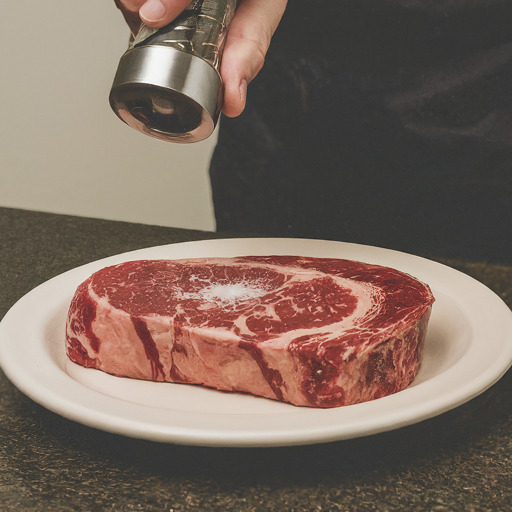

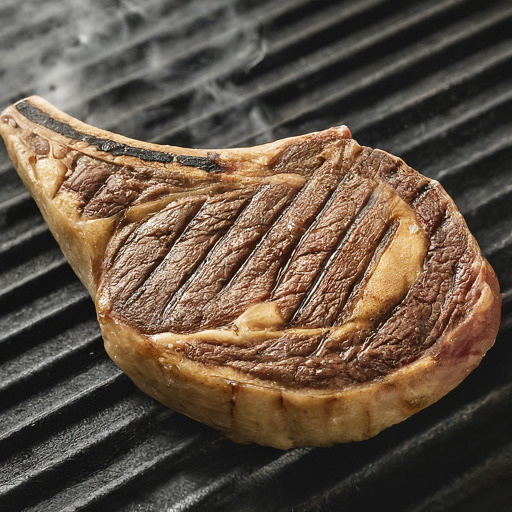
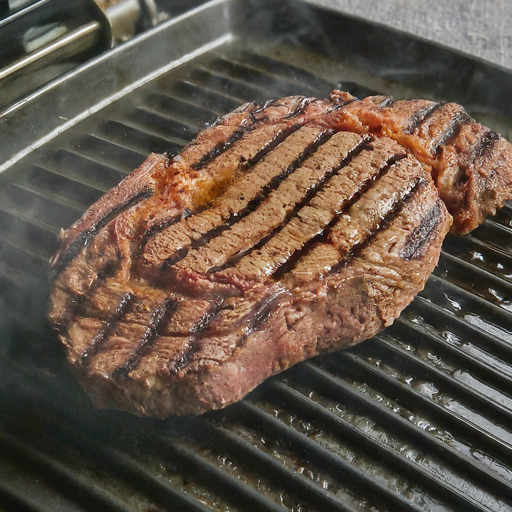
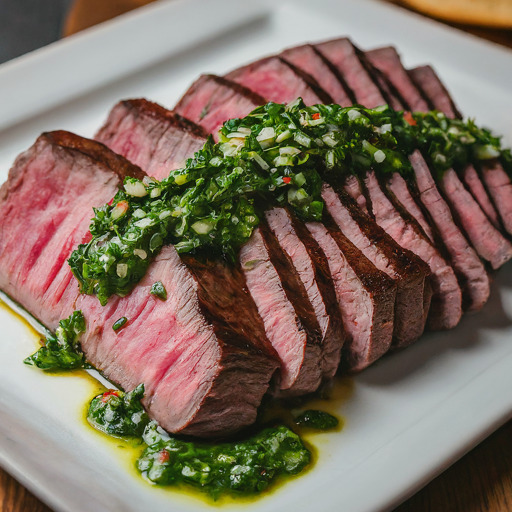

INGREDIENTS
For The Chimichurri sauce
1 packed fresh parsley leaves * 1/4 cup
1 olive oil * 2 tablespoons red wine
1 vinegar * 1 tablespoon lemon juice * 1
1 clove garlic, minced * 1/2 teaspoon
red pepper flakes * Salt, optional
and freshly ground black pepper to taste
For the Steak:
2 thick-cut steaks * Salt and freshly ground black pepper to taste * Olive oil, such as ribeye, New York strip, or skirt steak
Course meal: Breakfast, omnivore Diet
CUISINES: ARGENTINa inspired
Step by step instructions
1. Prep the Chimichurri Sauce:
1) * Gather your ingredients: fresh parsley, garlic cloves, olive oil, red wine vinegar, lemon, and red pepper flakes (optional) on a cutting board.
*
* Roughly chop the parsley leaves.
* Mince the garlic cloves for a stronger flavor, or leave them in larger pieces for a milder taste.
2. Blend the Sauce:
* Combine all the chopped ingredients for the chimichurri sauce in a blender.
* Pour in the olive oil and a splash of red wine vinegar or lemon juice.
* Pulse the blender until the mixture is finely chopped but still retains some texture. Season with salt and pepper to taste.
For the steak
3. Prepare the Steak:
* Select your favorite cut of steak for grilling. Thick-cut options like ribeye or New York strip work well.
* Pat the steak dry with paper towels to ensure even browning.
* Generously season the steak with salt and freshly ground black pepper on a plate.
4. Preheat the Grill:
* Get your grill nice and hot! Aim for medium-high heat, around 450°F (230°C) for optimal searing.
5. Sear the Steak:
* Carefully place the seasoned steak on the preheated grill.
* Sear the steak undisturbed for 2-3 minutes per side, depending on the thickness and desired doneness.
* Use tongs to turn the steak to avoid piercing it and losing its juices.
* You'll see beautiful grill marks forming on the surface of the steak.
6. Rest and Slice:
* Once the steak reaches your desired doneness, transfer it to a plate and tent it loosely with foil.
* Letting the steak rest for 5-10 minutes allows the juices to redistribute throughout the meat, resulting in a more tender and flavorful steak.
* Slice the steak against the grain for maximum tenderness.
7. Plate and Enjoy!
* Drizzle the vibrant green chimichurri sauce generously over the sliced steak for a burst of freshness and tangy flavor.
*
* Serve alongside your favorite grilled vegetables, roasted potatoes, or a simple salad for a complete and delicious meal.
**Accurate Nutrition Information (per serving):**
* Calories: 550-650 (depending on the fat content of the steak)
* Protein: 40-50 grams
* Fat: 30-40 grams
* Carbs: 5-10 grams
**Notes and FAQ:**
* **Choosing your steak:** Select a thick-cut steak like ribeye, New York strip, or skirt steak for optimal grilling results.
* **Doneness preference:** Use a meat thermometer to check the internal temperature of the steak for your desired doneness:
* Rare: 120°F (49°C)
* Medium-rare: 130°F (54°C)
* Medium: 140°F (60°C)
* Medium-well: 150°F (66°C)
* Well-done: 160°F (71°C)
* **Resting the steak:** Letting the steak rest after grilling is crucial for maintaining its juiciness.
Explore recipe variations by:
* **Trying different chimichurri ingredients:** Add a pinch of red pepper flakes for a spicier sauce or swap the parsley with cilantro for a different flavor profile.
* **Experimenting with marinades:** Marinate your steak in your favorite marinade before grilling for extra flavor.
* Chimichurri sauce can also be used on chicken, fish, or egg
**Storage Instructions:**
* Leftover steak can be stored in an airtight container in the refrigerator for up to 3 days.
* Chimichurri sauce can be stored in an airtight container in the refrigerator for up to 5 days.
**Possible Substitutions:**
* **Steak:** Flank steak, flat iron steak, or hanger steak can be used as substitutes.
* **Red wine vinegar:** Lemon juice or white wine vinegar can be used in place of red wine vinegar.
* **Fresh herbs:** If fresh parsley is unavailable, use ½ cup chopped frozen parsley or a combination of other fresh herbs like cilantro, basil, or oregano.
**Best Before Date:**
Freshly prepared chimichurri sauce is best enjoyed within 5 days. However, the chimichurri can lose some of its vibrancy and freshness over time.
**Allergy and Avoidance Information:**
This recipe contains gluten (from wheat) and soy (from soy sauce in the chimichurri sauce). Opt for gluten-free soy sauce or alternative ingredients like tamari or coconut aminos for a gluten-free version.
**Food and Beverage Pairings:**
* **Wine:** Pair this dish with a bold red wine like Malbec, Cabernet Sauvignon, or Zinfandel.
* **Beer:** Enjoy a cold beer like an IPA or a lager with your steak.
* **Non-alcoholic beverages:** Iced tea, lemonade, or sparkling water are refreshing options.
2 notes
·
View notes
Photo

Steaks - Asian Flair Flat Iron Steak After rummaging online recipes, and experimenting with my own, I came up with this sweet and tangy sesame marinade that my husband and I find quite tasty! You can also try cooking it in your indoor we have a Foreman grill.
0 notes
Text
"The Essential Guide to Cookware: Choosing the Right Pots and Pans for Your Kitchen"
Introduction: Cookware is the unsung hero of every kitchen, silently contributing to the delicious meals we enjoy daily. Whether you're an amateur home cook or a seasoned chef, having the right cookware can make a world of difference in your culinary adventures. In this blog, we'll explore the various types of cookware, their materials, and how to choose the best pots and pans for your cooking needs.
The Fundamentals of Cookware :Before delving into the specifics, let's cover the basics. Cookware is typically categorized into two main types: pots and pans. Pots are deep vessels with high sides, while pans have flat bottoms and low sides. Each serves its unique purpose, from simmering soups in a pot to searing steaks in a pan.
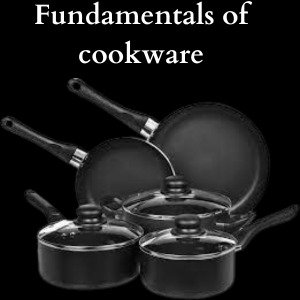
Cookware is an essential part of any kitchen, serving as the foundation for preparing delicious meals. These kitchen tools come in various shapes, sizes, and materials, each designed for specific cooking methods and recipes. Understanding the fundamentals of cookware is key to becoming a proficient cook.
Materials Matter: The material of your cookware affects how evenly it distributes heat, its durability, and its overall performance. Here are some common materials you'll encounter. Material Matter is a brand known for its innovative and sustainable cookware solutions.

They prioritize using eco-friendly materials and cutting-edge designs to create kitchen tools that enhance cooking experiences while minimizing environmental impact. From non-stick pans to versatile utensils, Material Matter aims to redefine the way we cook and care for our planet.
Stainless Steel: Known for its durability and resistance to staining, stainless steel is versatile and non-reactive. It's ideal for browning, searing, and deglazing. Stainless steel cookware is a popular choice among home chefs and professional cooks alike due to its durability, versatility, and sleek appearance.
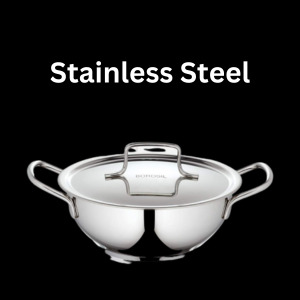
Crafted from an alloy of iron, chromium, and other metals, stainless steel cookware is resistant to rust and staining, making it a long-lasting kitchen staple. Its even heat distribution and non-reactive nature with food make it ideal for a wide range of cooking techniques. In this introduction, we'll explore the benefits and versatility of stainless steel cookware, as well as its maintenance and care to ensure it remains a valuable addition to your kitchen.
Cast Iron: Cast iron cookware retains and distributes heat exceptionally well. It's perfect for slow-cooking, frying, and baking. Seasoning your cast iron adds a natural non-stick surface. Cast iron cookware is a versatile and durable kitchen essential that has been used for centuries. It's made from molten iron that's poured into molds, creating pots, pans, and skillets known for their exceptional heat retention and even heating.
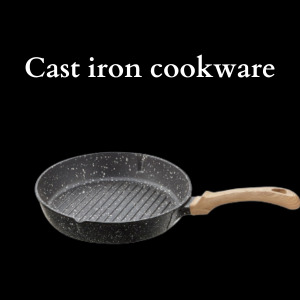
These qualities make cast iron cookware a favorite among professional chefs and home cooks alike. Whether you're searing, frying, baking, or even grilling, cast iron can handle it all. With proper care, it can last a lifetime and develop a natural non-stick surface known as seasoning. Let me know if you'd like to learn more about how to use and maintain cast iron cookware or have specific questions!
Non-Stick: Non-stick cookware has a coating that prevents food from sticking, making it easy to clean. However, it may require gentle care to avoid scratching the surface. Non-stick cookware has revolutionized the way we cook by making food preparation easier and more convenient. These kitchen essentials are typically coated with a non-stick surface, often made from materials like PTFE (Teflon) or ceramic, which prevents food from sticking to the pan.
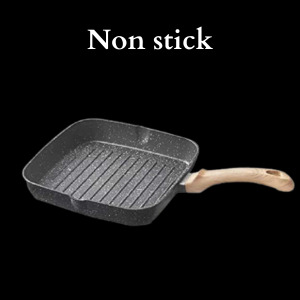
This innovation has reduced the need for excessive oil or butter in cooking, making meals healthier and cleanup a breeze. In this conversation, I can provide you with information, tips, and recommendations related to non-stick cookware
Copper: Copper cookware offers rapid, even heating but often requires a lining of stainless steel or tin to prevent reactivity with certain foods. Copper cookware has a rich culinary history dating back centuries. Renowned for its exceptional heat conductivity, copper cookware offers precise temperature control, making it a favorite among professional chefs and cooking enthusiasts alike. In this guide, we'll explore the benefits, care, and versatility of copper cookware, helping you elevate your culinary skills and create delicious meals.
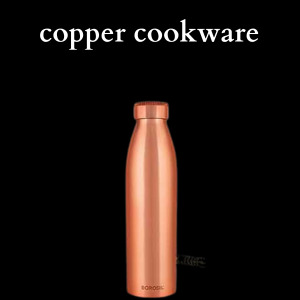
Aluminum: Lightweight and affordable, aluminum cookware heats quickly but may react with acidic foods. Anodized aluminum is a more durable and non-reactive option. Aluminium cookware is a popular choice in kitchens worldwide due to its lightweight, excellent heat conductivity, and affordability. It's commonly used for a wide range of cooking tasks, from sautéing to boiling.
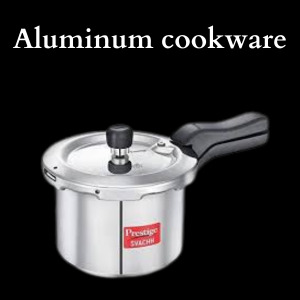
However, it's important to note that uncoated aluminium cookware can react with acidic or alkaline foods, potentially affecting taste and safety. To address this, many aluminium pans have nonstick or anodized coatings. Anodized aluminium is more durable and resistant to corrosion. When choosing aluminium cookware, consider your cooking needs, maintenance preferences, and potential health concerns associated with aluminium exposure.
Choosing the Right Cookware: The cookware you select should align with your cooking style and needs. Here are some considerations. Choosing the right cookware is essential for achieving great results in the kitchen. From pots and pans to utensils and bakeware, selecting the right tools can make cooking more efficient and enjoyable.
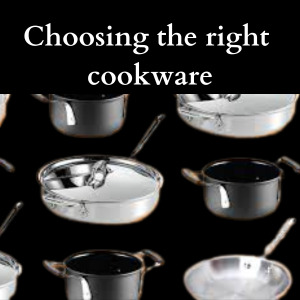
In this guide, we'll explore the key factors to consider when choosing cookware, including material, heat conductivity, durability, and maintenance. Whether you're a seasoned chef or a beginner in the kitchen, making informed choices about your cookware will help you elevate your culinary skills and create delicious meals.
Conclusion :Investing in high-quality cookware is an investment in your culinary journey. By understanding the fundamentals of cookware materials and choosing pieces that align with your cooking style, you'll be well-equipped to create delicious meals for years to come. Remember, the right cookware is not just a tool; it's a partner in your culinary adventures. Happy cooking!
#cookware#kitchen#utensils#home & lifestyle#kitchen appliances#stainless steel#manufacturers#daily update#home cooking#main dishes#alluminum fence#stainless steel kitchen appliances#cooker
2 notes
·
View notes